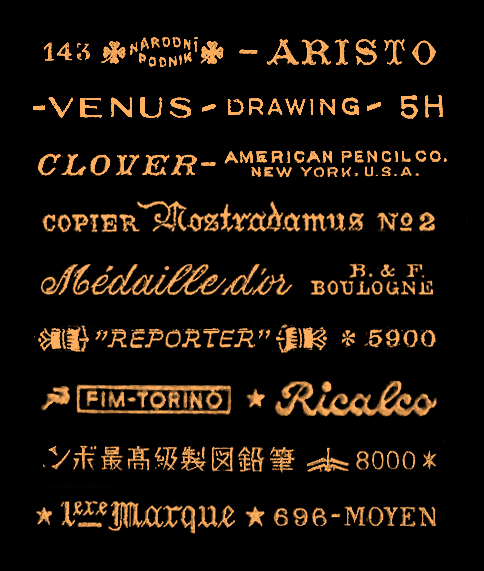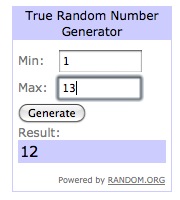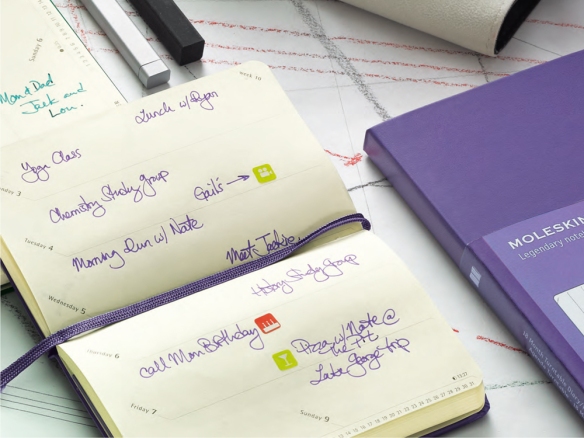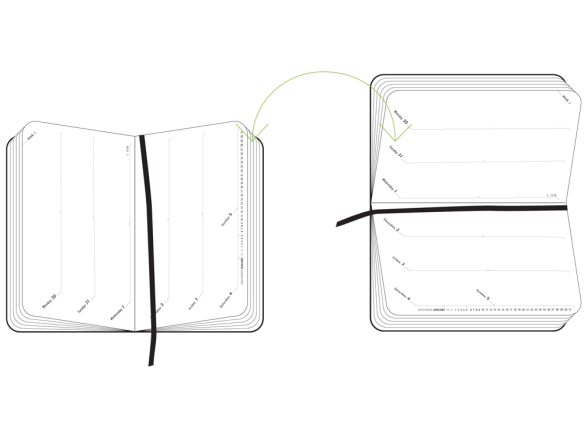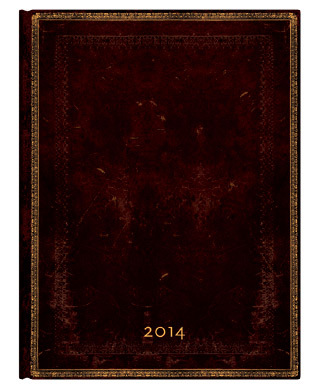
It was recently suggested that I try out the Miro brand of notebooks and I was happy to oblige. I purchased three different versions of their notebooks: a small lined journal (3.25×5.5″), a plain large journal (5×8″) and a set of utility notebooks (3.25×5.5″).

The Miro Journal Series notebooks are definitely going to get comparisons to Moleskines. They are hardcover and have black elastics running vertically, leatherette covers. They have ribbon bookmarks and even have a pocket in the back though its more of a slit than the gusseted pocket found in a Moleskine and other look-alikes.
The most notable difference in the appearance of the Miro notebooks is the colored edges. The Journal Series notebooks are available with either white or black leatherette covers with colored edges. They offer black, cyan, magenta, green or red edging with either cover option.On the covers and spines is a blind embossed logo which is subtle and tasteful.
I purchased the two most familiar sizes– small lined journal (3.25×5.5″), a plain large journal (5×8″)– but they also sell a larger 7×10″ size as well. The medium and large sizes are available in plain or lined versions but the small size is only available in lined. No grid or dot grid options for the Journal Series at present. Each book has 144 pages in it. The Journal Series sells for $9.99, $13.99 and $17.99 respectively.

The utility notebook is hopping on the Field Notes trend. Miro offers the traditional pocket sized (3.25×5.5″) Utility notebook but also a medium (5×8″) and large size (7×10″) which is more likely to be compared to the Moleskine Cahiers. All three sizes of Utility notebooks are available in blank, lined, gird or dot grid paper. They have the simple cardstock covers with either black, white, pink or green covers. Sets of two 68 page notebooks are $3.99, $5.99 and $7.99 respectively.

The lines on the Utility and Journal series notebooks look similar but when I double checked, the line spacing on the Utlitity notebook was 7mm and the Journal Series is 6mm in the same sized books. I don’t find this to be a big deal since the Utility notebooks are more likely to be used on-the-go so a bit more breathing room for the spacing is probably helpful where the Journal Series notebooks are likely to be used for longer form writing, meeting notes and such.
I also want to mention the difference in the papers. Both books feature a warm ivory color comparable to the Piccadilly I use at present. The lines on the paper are very fine but a medium/dark grey. The Journal Series paper is heavier weight (100gsm) than the Utility Series (no weight listed on the packagin). I wasn’t sure how the Utility notebooks would perform with inks.

The stitching on the Utility notebooks is exposed sewn stitching. It looks like a strong stitch and clearly visible. I like the stitching and is different to the staple-stitching on Field Notes. Again, its more consistent with the Moleskine cahiers.

I wanted to show the slit pocket on the back cover of the Journals. There is no gusseting so it won’t keep much, just a few scraps.

In writing samples, I was blown away with the paper quality for the price. I ended up testing a Sharpie at the end just to see if it could stand up to the challenge. None of my pens bled or feathered or splined at all. Even with the lighter weight paper of the Utility Notebooks, the paper still performed very well, especially for the price.
(The smudge on the Pilot Juice writing sample on the the Journal notebooks was a result of an exploding pen on my desk and not dry time on the paper, FYI)

There is a little show through on the reverse but I would definitely use both sides of the paper with almost all of my daily writing tools.
There are eight sheets in the back of the Journal series and four pages in the back of the Utility Series that are perforated so they can be easily removed.
Overall, I think these notebooks are a great value. I have not had time to fully abuse a Miro notebook to see how they hold up to long term use but I feel confident that they will be comparable to the Piccadilly or a Moleskine with great paper and intriguing colored edging. The Utility series is a great alternative to the Field Notes at almost half the cost. Miro also makes some wirebound notebooks with wood or felt covers which are visually more unique.




